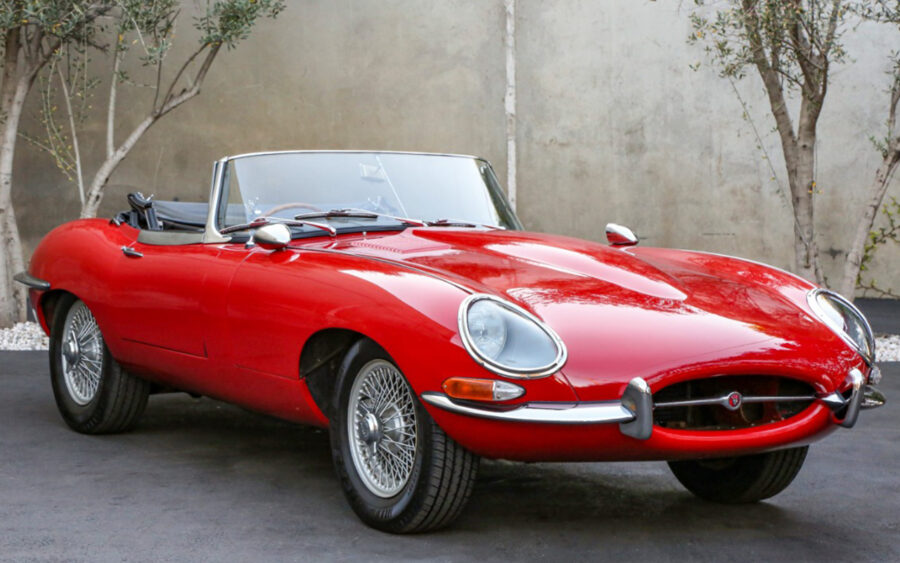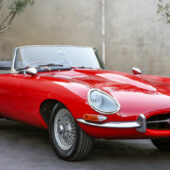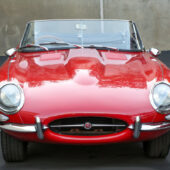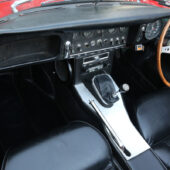The Jaguar E-type is perhaps the most widely lusted-after classic car on the planet. Here’s our guide to living with one
Sponsored editorial in association with Beverly Hills Car Club
Perhaps the most iconic, well-known and universally loved classic car of all time, the Jaguar E-type combines rakish good looks, great performance from characterful engines, lashings of wood and leather, motorsport pedigree, plus lots of specialist and parts support. Prices are strong for all generations but if you’ve got the budget, few classics tick so many boxes.
Produced across three generations from 1961 to 1975, the E-type started life as a lithe roadster and coupe that undercut its rivals on price considerably; subsequent generations added extra seats (in the E-Type 2+2 of 1966), visual and mechanical changes to meet US legislation, and even a V12 engine originally developed for use in its XJ saloon sibling.
Values are always strongest for early ‘flat-floor’ Series 1 examples, but even the previously unloved Series 3 has found its feet as a sought-after classic today.
If you’re planning on taking the plunge, here are some tips for happy Jaguar E-type ownership.

Engine, transmission and mechanicals
As with most old cars, the key to keeping any E-type in good condition is regular maintenance. An oil change every year is sensible even with low mileages, and the same can be said for transmission and diff oils if you want to be extra careful. Regular coolant changes and flushes are sensible, especially on Series 2 cars to avoid the risk of seized cylinder head studs.
Almost all issues on E-type engines stem from poor maintenance; these can include leaky rear main oil seals or worn camshafts. Zenith-Stromberg carbs fitted on Series 2 and 3 examples require specific tools for set-up and balancing, so be prepared to visit a specialist semi-regularly to keep yours in fine fettle.
V12 cars use a timing chain with a tensioner that usually works well, but can start to slip. It’s best to keep an eye on this before a costly engine strip-down is required.
Gearbox issues should be avoided with regular maintenance but worn syncromesh and jumping out of gear are common issues. Early cars use a four-speed Moss unit with no syncho on 1st, while later cars get Jaguar’s own four-speed unit. A three-speed auto was also offered: erratic changes point to problems.
Neglect of the brakes can result in big work, especially if the rear inboard items need attention. A non-functioning handbrake is a bad sign here.

Bodywork and interior
Rust is your main enemy here. The front framework can corrode and is costly to repair, with replacements costing thousands. Keep an eye out for corrosion throughout, with particular focus on sills, floors, doors and wheelarches.
Inside, keep an eye on the watertightness of door seals and hood if fitted. If any play starts making itself felt in the steering wheel, it’s likely the steering column bushes will need to be replaced. General wear and tear is generally easy to fix thanks to a wealth of specialists and upholsterers around, but big jobs can be pricey.
Finding a good example
Our usual advice stands: buy from a reputable dealer to avoid headaches in the first instance. Specialist servicing is also vital if you’re not handy with a spanner yourself – a neglected E-type is likely to become a broken one quicker than you may realise.
The issue of corrosion can be avoided by looking overseas to drier climates when sourcing an E-type. Beverly Hills Car Club in Los Angeles has a huge range of E-types for sale (known as the XKE in the States), from barn-find projects to pristine ready-to-drive examples. At time of writing, the car pictured here is one such E-type available to buy: a right-hand-drive 1964 example resplendent in Signal Red.
BHCC owner Alex Manos is clearly a big fan: “The Jaguar XKE is such an utterly unique car it is almost impossible not to feel reverent before it,” he says.

Sponsored by Beverly Hills Car Club
The automobiles sold at Beverly Hills Car Club combine all the elements of its exclusive address in Los Angeles: cars for sale that are the very last word in tasteful elegance, chic and impressive sophistication, with careful attention given to each vehicle and each client. Both national and international customers are catered for, with a huge stock of classics to choose from.
For more information and to view the Beverly Hills Car Club stock, visit www.beverlyhillscarclub.com










